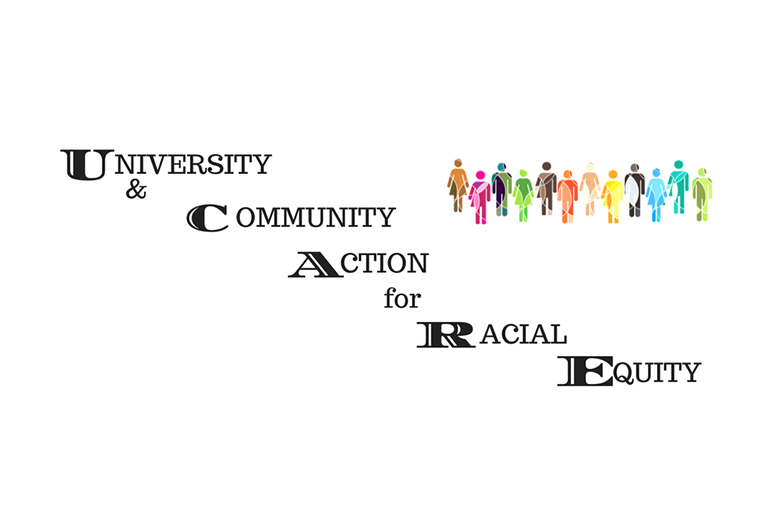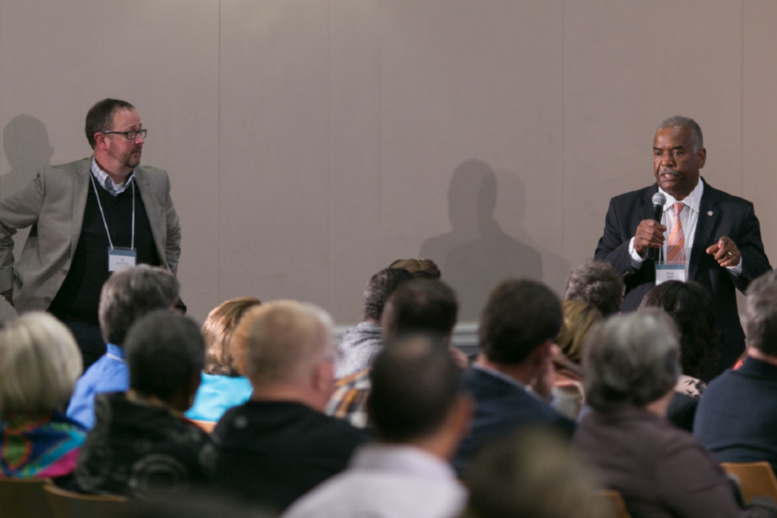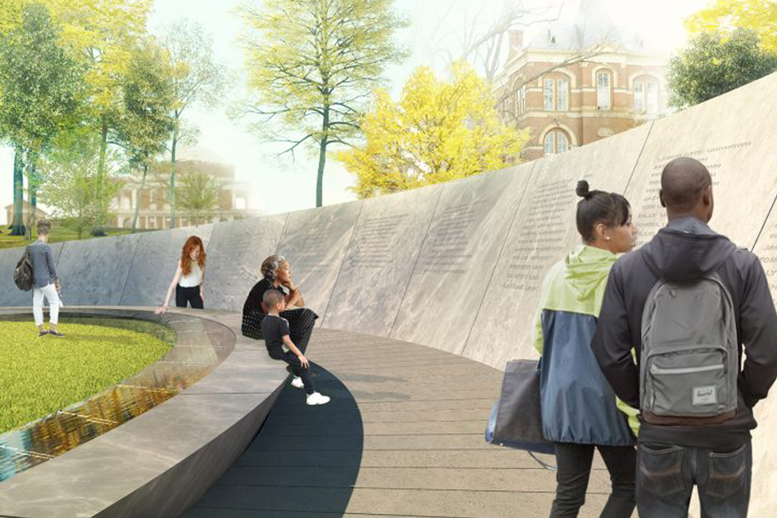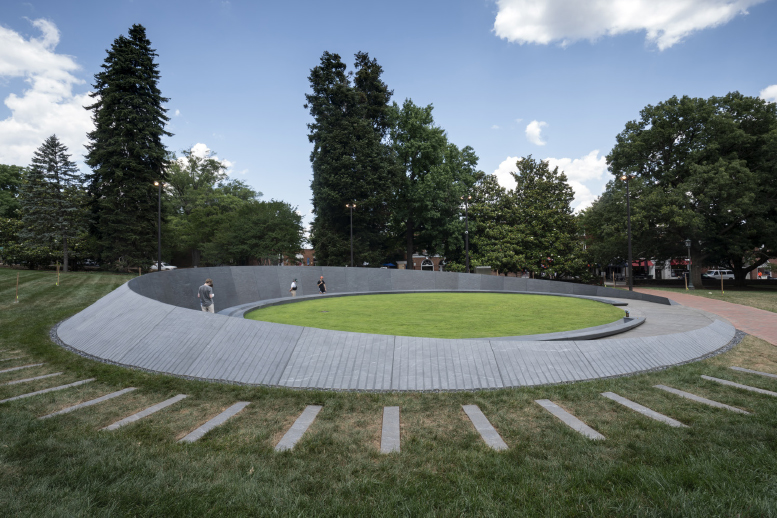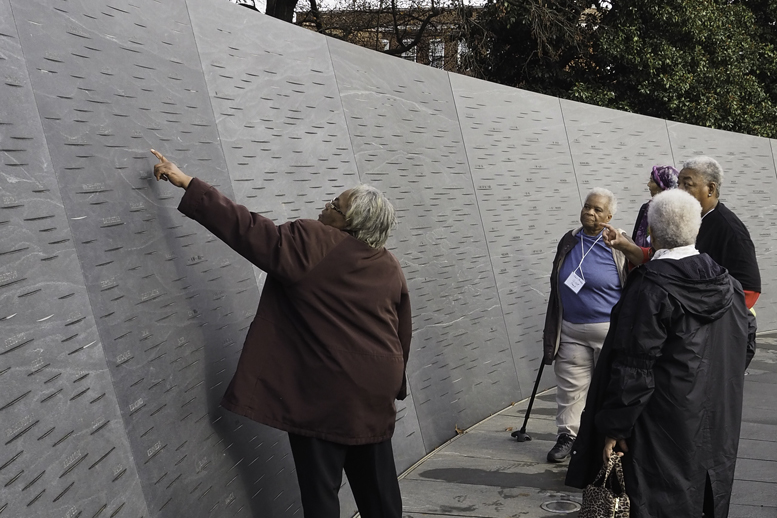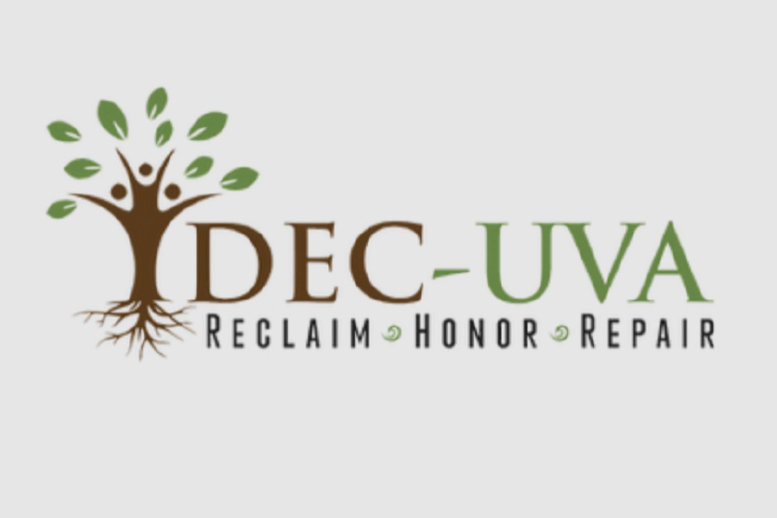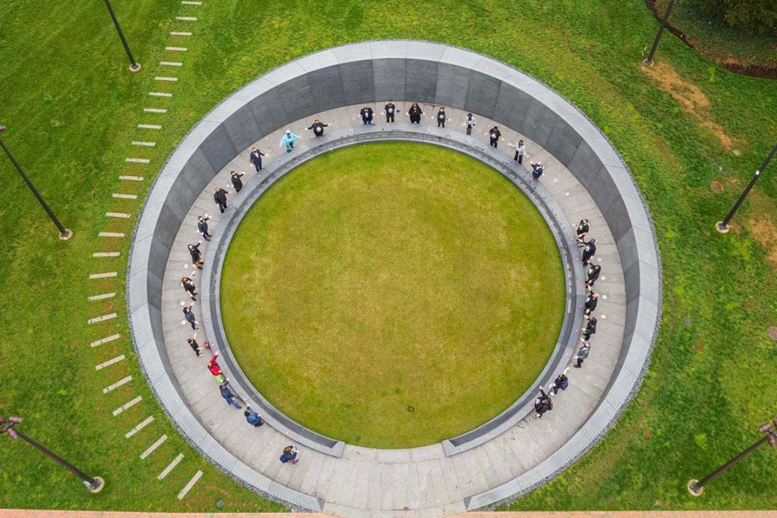The UVA Board of Visitors issued a statement of commendation for a Resolution passed by the Virginia State General Assembly that expressed profound regret for the state’s role in slavery. UVA issued a statement that expressed their own particular regret for the use of enslaved persons and installed a small marker near the Rotunda honoring the service of both free and enslaved workers during the construction of the university’s original buildings.
A small group of faculty and students began developing what became University Community Action for Racial Equity (UCARE).
The student-led group MEL sponsored a “competition of ideas” to raise awareness and promote interest in building a more fitting memorial.
As the result of efforts by the UVA IDEA Fund, a university alumni group, and the Office for Diversity and Equity, a plaque honoring Henry Martin was installed near the University Chapel. Martin (1826-1915) spent over fifty years at the university as both an enslaved worker and an employee.
Archaeologists discovered 67 unmarked graves adjacent to the University Cemetery. The internments varied in size, documenting that in addition to many adults, fifteen children were also buried there. No internments were disturbed.
A small group of UVA faculty found JUEL (Jefferson’s University the Early Life) which would become the major archival research engine for understanding the specific history of slavery at UVA.
UVA President Teresa Sullivan created the President’s Commission on Slavery and the University (PCSU), chaired by Dr. Marcus L. Martin and Professor Kirt von Daacke. The Commission was charged with providing recommendations regarding the recognition and acknowledgment of the history of slavery at the University of Virginia. The commission began community engagement work in the community, building a foundation for later work by the design team.
The UVA IDEA Fund commissioned a report that provided a comprehensive review of the various initiatives focused on the University’s historical relationship to slavery.
The PCSU presented the symposium “Universities Confronting the Legacy of Slavery,” which included a commemoration ceremony at the rediscovered African American cemetery.
A new residential building was dedicated and named in honor of the memory of William and Isabella Gibbons, who were formerly enslaved by two UVA professors.
The PCSU sponsored a panel discussion on the topic of memorialization and memory as part of the Community MLK Celebration, and University support for the construction of a memorial on Grounds increased as a result. The Board of Visitors added the Memorial to Enslaved Workers to the official list of Capital Building Projects, authorizing funds for the selection of a professional design team.
UVA selected a design team for the memorial, including architects Meejin Yoon and Eric Höweler, historian and designer Mabel O. Wilson, landscape architect Gregg Bleam, and community facilitator Frank Dukes. (Artist Eto Otitigbe subsequently joined the team in December of 2017.)
The design team began the community engagement process by learning about the work done at UVA by the PCSU and MEL student leadership. Students asked the design team to consider a memorial design that could be a meeting ground for activism as well as a place to learn about Black history.
Initial design options were presented to the community for feedback through a meeting with the Steering Committee, two Community Forums, and a meeting at Ebenezer Church.
Design options were revised and narrowed down to two options based on community feedback. The design team presented to the Steering Committee, held three Community forums, presented to Black Alumni from UVA, and held a meeting at Mt. Zion First African Baptist Church.
After careful study, the memorial was sited in the Triangle of Grass, a threshold on Grounds that is visible and accessible to the wider Charlottesville community. Members of the community stand on a chalk circle with a circumferance matching the size of the University's Rotunda.
The design of the memorial was further revised through conversations with the Steering Committee, the President’s Commission on Slavery and the University, and a presentation during Black Alumni Weekend at UVA.
A final design approach was approved by the Board of Visitors’ Buildings and Grounds Committee. The vote authorized the team to move forward for “further development and construction,” according to the board resolution.
The PCSU held a symposium “Universities, Slavery, Public Memory, and the Built Landscape,” in collaboration with The Slave Dwelling Project.
Artist Eto Otitigbe was added to the design team and commissioned to create a piece for the memorial.
The general construction contract was awarded to Team Henry Enterprises. Stone selection began at the Virginia Mist Quarry.
The MEL Community Engagement Committee was established to steer ongoing engagement during and after construction.
Ground was broken for the construction of the memorial.
The design team traveled to Madison, Wisconsin to review stone construction mockups at Quarra Stone with a team from UVA. Mockups showed a portion of the artwork depicting Isabella Gibbons’ eyes as designed by Eto Otitigbe.
A blessing ceremony was held on Freedom and Liberation Day (March 3rd) as the memorial is in the early phases of construction.
Construction reached a major milestone as concrete foundations were completed.
UVA hired Shelley Murphy as descendant project researcher to continue to identify family ties to the enslaved community at UVA.
The first stone in the memorial’s circle was lifted into place by Quarra Stone.
Stone installation was completed.
The memorial was a stop during Freedom and Liberation Day celebrations commemorating the end of slavery in Charlottesville and Albemarle County.
The official dedication events for the memorial were postponed due to the pandemic.
The UVA community, led by students at the School of Medicine, gathered for “White Coats for Black Lives” demonstration at the MEL site in response to the killing of George Floyd and in support of Black Lives Matter.
As the first of an annual event recognizing the continuing work of research and community engagement, the names of Davy Hern, Fanny Gillette Hern, Bonnycastle Hern, Lily Hern, and Ben Snowden were added to the memorial wall.
The Descendants of Enslaved Communities at UVA was formally established to serve as a collective voice of all descendants of enslaved and free Black communities who labored at UVA, through research, education, and preservation.
The Descendants of Enslaved Communities at UVA held their first events, a private dedication ceremony during which the memorial’s water was first turned on, and a virtual panel discussion on Descendant Communities in Virginia.
The official Dedication Ceremony for the Memorial to Enslaved Laborers was held virtually.

